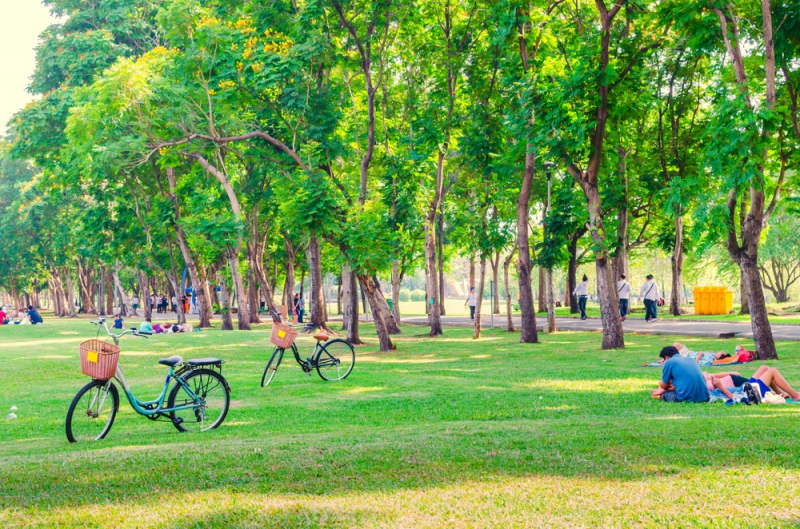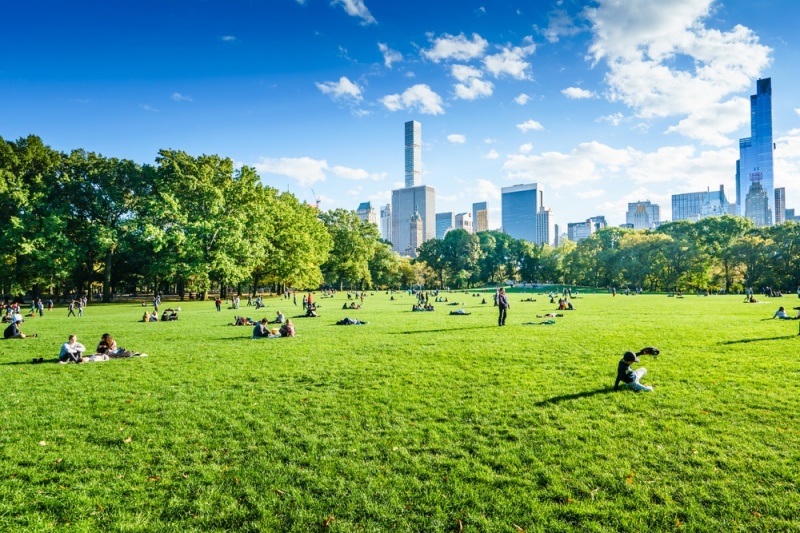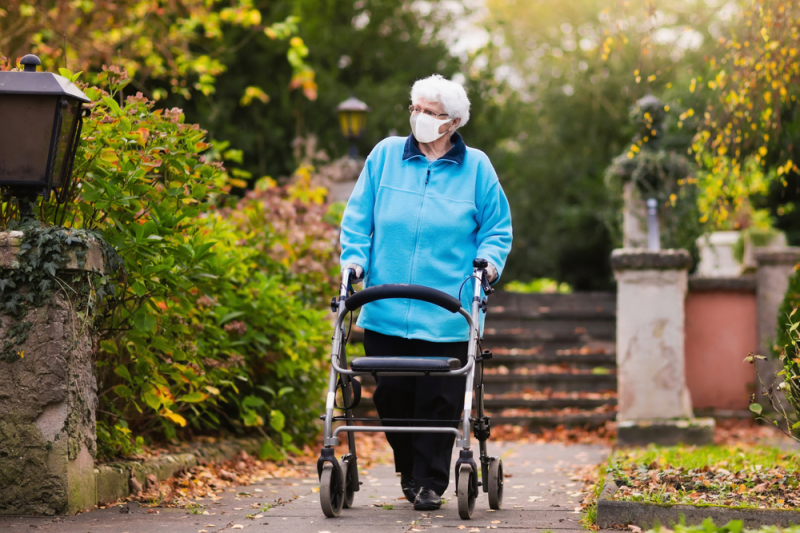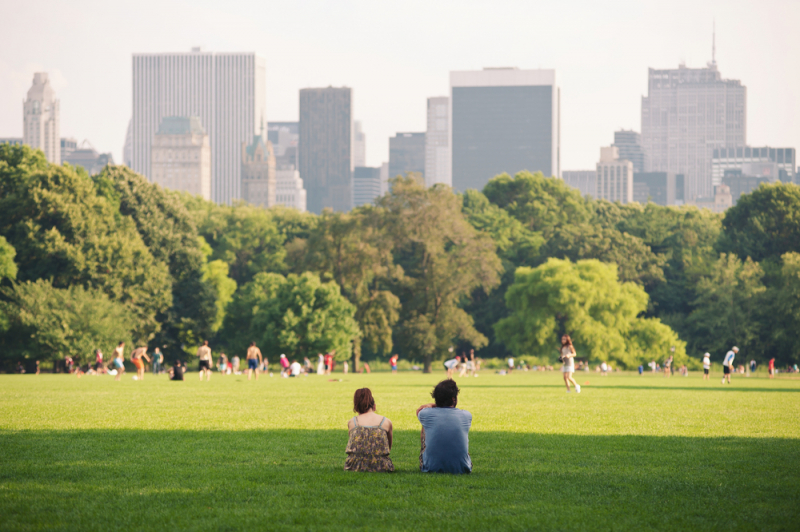Lectures by invited experts were organized as part of an elective course for students of the Master's programs Urban Studies and Urban Planning and Design. The events series was organized by associate professor Irina Shmeleva, head of the Laboratory of Sustainable Urban Development.
The first day of the lectures was entirely devoted to the topic of urban greening, its role in the ecological and economic state of the metropolis, as well as its impact on the psychological and physical condition of city residents.
Kristina Vardanyan, PhD, a landscape designer and associate professor at Yerevan Medical University, adviser to the Yerevan City Administration on landscaping issues, spoke about the impact of nature on human health. Alexander Vodyanik, adviser to the head of the Krasnodar Municipality Administration and an expert of the Civic Chamber of the Russian Federation, spoke about the governmental approach to urban green planning in Russia and other countries of the world.
Maria Tinika, coordinator of the public movement Trees of St. Petersburg, shared the data of her research on green spaces in the city, demonstrated examples of how trees were systematically destroyed in St. Petersburg over the past three decades, got into the reasons behind that issue, and explained how it can be prevented.
The following article is a recap of Kristina Vardanyan's lecture that delved into research on the health of residents of major cities and the impact of nature on physical and mental well-being.

Poor environmental conditions and their impact on health
According to Kristina Vardanyan, the issue of urban green zones is not a matter of aesthetic comfort, but an important element of public health protection. It is no coincidence, for example, that in the United States, the issue of urban space greening is in the jurisdiction of the Department of Health and Human Services and not the Housing Committee.
According to WHO’s research on the impact of the environment on the health of citizens, 7 million people die from air pollution-related diseases every year – most of all in the cities with the highest air pollution rates in Pakistan, India, and Afghanistan.
Fine particles found in polluted air are called “invisible killers”: they are responsible for 29% of all deaths from lung cancer, 24% from strokes, 25% from heart disease, and 43% from lung diseases.

In the short term, polluted air causes headaches, nasopharyngeal inflammation and eye irritation, coughing and breathing issues, bronchitis and pneumonia, and skin irritation. Long-term effects include central nervous system disorders (including anxiety disorders and depression), cardiovascular diseases, respiratory diseases (lung cancer, asthma), as well as damage to liver, circulatory system, and reproductive system.
Moreover, small children are in the high-risk zone. The fact is that most pollutants accumulate 50-100 cm from the ground, just at the height of a child's mouth and nose. According to WHO, in 2016, 543,000 children under 5 years and 52,000 children aged 5 to 15 years died from health complications due to polluted air worldwide.
A polluted urban environment has a negative impact on the health of infants. According to Rosstat, over the past 20 years in Russia, cases of primary mortality from neoplasms in children under 14 have increased by 4.6 times, the number of children with congenital anomalies has increased fourfold, and the number of children with diseases of the musculoskeletal tissue has increased by the same amount.

The problems of modern cities and their solutions
Kristina Vardanyan noted that when parks and greenery take up less than 20% of the area of a contemporary city with an active industrial complex and loads of traffic, citizens will experience health problems due to oxygen deprivation and intoxication with harmful emissions.
We should also keep in mind noise pollution. Researchers have analyzed the data on the health and death rate of 8.6 million Londoners between 2003 and 2010. It turned out that the death rate was higher by 4% in areas with noise levels over 60 dB at daytime than in areas with the noise level below 55 dB. At the same time, we know that greenery can bring the noise level down by 15 dB.
For southern cities, there is also a problem of heat islands – densely built-up areas tend to overheat during the day and do not cool down completely during the night.
All of these factors – air pollution, noise, heat – have a negative effect on the physical health of city dwellers and their stress levels. At the same time, a large number of studies demonstrate nature's restorative effects on humans.

Only five minutes spent in natural surroundings can help people significantly recover from stress – as evidenced by changes in their blood pressure, heart rate, cortisol levels, muscle tension, and the brain’s electrical activity. By contemplating nature we can boost our positive emotions and suppress negative ones, such as fear, rage, or sadness.
The Japanese practice of forest bathing, or shinrin-yoku, is becoming more and more popular. It promotes long and thoughtful walks in forests that involve the deepest possible immersion in the process of contemplating nature by paying attention to all senses. A number of studies demonstrates that such forest baths have a positive effect on our mental state.
Nature in the city
Researchers in the Netherlands and China have discovered a connection between the proximity of green areas and the spread of diseases. The lowest number of registered cases of various illnesses, especially anxiety disorders and depression, was found in areas located within 1 km from green spaces.
Another Chinese study analyzed the data from 3,544 Chinese men and women aged over 65. Higher levels of greening were linked to lower risks of death from all reasons, including cardiovascular diseases or strokes.

Nature plays a key role in creating spaces crucial for communication and it is an integral part of developing social connections between city residents. Public places with trees can boast a higher social activity level than those without any greenery; surrounded by trees, people are more likely to feel as part of a community, they will more readily sign up for various public events. Tight social connections mean a better community and a lower crime rate in the area.
Over the recent years, researchers developed the term nature deficit disorder to talk about the negative factors found in children kept away from natural landscapes. A Chinese survey of about 60,000 children showed that going to schools or kindergartens in greener areas correlates with lower chances of developing ADHD. At the same time, playing outside and getting to explore forests helps develop cognitive abilities in children.
Greening of hospital territories for effective recovery

A hospital garden can be a useful element of patient therapy. Nature can be used as a way of saving on healthcare, as it reduces the time patients stay in hospitals, as well as the need for injections of costly treatments. At the same time, well-groomed hospital territories are perceived extremely positively by both patients and the staff, which can lessen the psychological burden.
As an example, Kristina Vardanyan cited her own project of greening the territories of 15 hospitals in Yerevan. A sociological survey among medical staff showed that the dustiness of the hospital area decreased by almost 90%, the noise level decreased by 75%, and the manifestation of allergic reactions decreased by more than a half. Almost all doctors agreed that greening had a positive therapeutic effect in the recovery period of patients and that hospital gardens should be considered a mandatory structural unit of medical institutions





